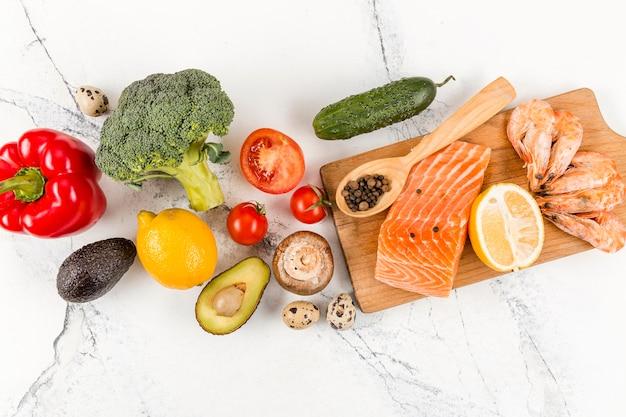Butter, a staple ingredient in many culinary delights, has been enjoyed for centuries. Have you ever wondered about the nature of this creamy goodness? Is butter polar or nonpolar? What about other fats? Understanding the polarity of substances is crucial in various scientific fields, including chemistry and biology. In this blog post, we will delve into the concept of polarity and explore whether butter falls into the polar or nonpolar category.
We will not only discuss the polar and nonpolar characteristics of butter but also explore related questions such as the polarity of other common substances like milk, oil, and sugar. Additionally, we will investigate the solubility of butter in water, its composition, and the reasons behind its nonpolar nature. So grab a seat, put on your scientific goggles, and let’s unravel the mystery of whether butter is polar or nonpolar.
Stay tuned to expand your knowledge and discover the science behind everyone’s favorite spread in this fascinating exploration of butter’s polar or nonpolar nature.
Let’s dig in!

Is Butter Polar or Nonpolar
Butter: A Creamy Delight
Butter, that rich, creamy delight that adds flavor and decadence to our meals. Whether slathered on warm toast or melted over a sizzling steak, butter has found its way into our hearts (and our arteries). But have you ever wondered about the scientific nature of this kitchen staple? Is butter polar or nonpolar? Let’s dive into the molecular world of butter and find out!
The Polarity Puzzle
To understand whether butter is polar or nonpolar, we need to explore the concept of molecular polarity. Polarity refers to the distribution of electrical charge within a molecule. Polar molecules have an uneven distribution of charge, with one end being more positive and the other more negative. Nonpolar molecules, on the other hand, have an even distribution of charge or no significant charge separation.
Butter Up for Chemistry
It’s time to put on our lab coats and delve into the chemistry of butter. Butter is primarily composed of triglycerides, which are esters formed by glycerol and fatty acids. These fatty acids consist of long chains of carbon and hydrogen atoms.
The Butter Battle: Polar vs. Nonpolar
Now that we have the chemical background, let’s determine if butter is polar or nonpolar. The fatty acids present in butter are nonpolar molecules due to their long carbon and hydrogen chains. However, the glycerol component contains hydroxyl groups (-OH), which can cause polarity. This makes butter a bit of a mixed bag when it comes to polarity.
Butter’s Polarity Tug-of-War
The nonpolar fatty acids and the polar glycerol in butter engage in a molecular tug-of-war. The hydrophobic (water-repelling) nature of the fatty acids tends to dominate, making butter overall more nonpolar than polar. This explains why butter doesn’t mix well with water but easily melts on a hot pan.
Chemistry in Your Kitchen
So, what does the polar or nonpolar nature of butter mean for us in the kitchen? Well, it means that butter can dissolve nonpolar substances, such as fat-soluble vitamins and aroma compounds. This allows it to infuse flavors into our food, making it even more delicious.
Butter: A Multifaceted Molecule
Butter’s ability to simultaneously exhibit polar and nonpolar properties adds to its versatility in culinary applications. It’s not just a simple spread or cooking agent; it’s also a crucial component in creating creamy sauces, flaky pastries, and tender baked goods.
In Butter We Trust
While the polar or nonpolar nature of butter is fascinating from a scientific standpoint, for us food enthusiasts, it ultimately comes down to one thing – flavor. So, the next time you find yourself blissfully indulging in a buttery treat, remember that this seemingly simple ingredient has a complex molecular personality, blending the polar and nonpolar worlds in delicious harmony.
In conclusion, butter can be considered both polar and nonpolar due to the interplay between its nonpolar fatty acids and polar glycerol. Understanding butter’s molecular nature adds a new dimension to our appreciation for this beloved ingredient. So, let’s embrace the marvels of science in our kitchens and continue to enjoy the wonders of buttery goodness.

FAQ: Is Butter Polar or Nonpolar
Welcome to our FAQ-style section on the topic “Is butter polar or nonpolar?”. Whether you’re a chemistry enthusiast or simply curious about the properties of butter, you’ll find the answers to your burning questions here. We’ll explore the concepts of polarity and nonpolarity, discuss the nature of butter, and discover why it behaves the way it does. So grab your lab coat, put on your thinking cap, and let’s dive in!
What is Polar and Nonpolar
Polarity refers to the distribution of electrical charges within a molecule. In polar molecules, such as water (H2O), the electrons are unevenly shared, resulting in a separation of positive and negative charges. Nonpolar molecules, on the other hand, have an equal sharing of electrons, leading to a lack of significant charges.
How Do You Determine if a Substance is Polar or Nonpolar
Determining the polarity of a substance involves examining its molecular structure. If the molecule has a symmetrical shape with an even distribution of electrons, it is likely nonpolar. On the other hand, molecules with an asymmetrical shape or the presence of polar bonds are more likely to be polar.
Is the Fat in Milk Polar or Nonpolar
The fat present in milk consists mainly of triglycerides. Triglycerides are composed of three fatty acid chains attached to a glycerol molecule. Fatty acids are typically long hydrocarbon chains, which are nonpolar. As a result, the fat in milk, including butter, is considered nonpolar.
Is Oil a Polar Solvent
Oil, like butter, belongs to the category of nonpolar solvents. It doesn’t have the ability to dissolve polar substances such as salts or sugars. Instead, oil is better suited for dissolving nonpolar substances.
Is Sugar Non-Polar
No, sugar is not nonpolar. Sugar molecules, such as table sugar (sucrose), contain polar functional groups, including hydroxyl (-OH) and carbonyl (C=O) groups. Therefore, sugar is considered polar.
Is Milk Polar or Nonpolar
Milk, like butter, is primarily composed of water along with other substances such as proteins, carbohydrates, and fats. While water is a polar molecule, the fat content in milk, including butterfat, is nonpolar. As a whole, milk is considered a mixture of polar and nonpolar components.
Are Shampoos Polar or Nonpolar
Shampoos can contain both polar and nonpolar ingredients. The presence of surfactants, which help remove dirt and oils from the hair, makes shampoos amphiphilic, meaning they possess both polar and nonpolar properties. This allows them to effectively interact with both water and oil, making shampooing more efficient.
Is Butter Hydrophilic
While butter is mainly composed of nonpolar fats, it does contain some water. However, due to the nonpolar nature of its fats, butter is considered hydrophobic, meaning it tends to repel or be insoluble in water.
Is Oil and Water Polar or Nonpolar
Water is a polar molecule, with oxygen carrying a partial negative charge and hydrogen carrying partial positive charges. On the other hand, oil, including butter, is composed of nonpolar molecules. As a result, oil and water do not mix well due to their differing polarities, leading to the separation of the two substances.
Are Oils Nonpolar
Yes, oils, including butter, are classified as nonpolar substances. They consist primarily of nonpolar fatty acids, which makes them insoluble in water but soluble in other nonpolar solvents.
Is Soap Non-Polar
Soap is an interesting case. It possesses both polar and nonpolar properties, making it amphiphilic. The polar end of soap molecules has an affinity for water (hydrophilic), while the nonpolar end is attracted to oils and dirt (hydrophobic). This dual nature allows soap to form micelles, effectively trapping and removing oil and dirt when mixed with water.
Why are Fats Not Polar
Fats, including the ones present in butter, are composed of long hydrocarbon chains. Hydrocarbon chains consist solely of carbon and hydrogen atoms, which results in a symmetrical distribution of electrons and an absence of significant charges. This uniform sharing of electrons makes fats nonpolar.
Why Does Butter Consist of Nonpolar
Butter primarily consists of triglycerides, which are composed of three fatty acid chains attached to a glycerol molecule. As previously mentioned, fatty acids are nonpolar due to their long hydrocarbon chains. Hence, the presence of these nonpolar fatty acids in butter accounts for its overall nonpolar nature.
Is Oil Nonpolar or Polar
Oil, such as vegetable oil or olive oil, is a classic example of a nonpolar substance. It predominantly consists of triglycerides, which, in turn, are composed of nonpolar fatty acid chains. As a result, oil is classified as nonpolar.
Is Butter Water-Soluble
No, butter is not water-soluble. Due to its nonpolar nature, butter does not dissolve well in water. However, it can mix with other nonpolar solvents, such as oils or melted fats.
Is Cheese Polar or Nonpolar
Cheese, like milk, is composed of various components such as proteins, fats, water, and salts. While some of these components, like proteins and salts, may contain polar functional groups, the overall composition of cheese, including its fatty portion, tends to be nonpolar. Hence, cheese is considered a combination of polar and nonpolar elements.
Is Dish Soap Polar or Nonpolar
As stated earlier, dish soap is an amphiphilic substance, possessing both polar and nonpolar characteristics. The polar end of soap molecules interacts with water, while the nonpolar end has an affinity for oils and grease, helping to remove them during dishwashing.
Which Oils Are Polar
Most oils, including vegetable oil and olive oil, are nonpolar substances. However, there are exceptions. Some specialty oils, such as castor oil, contain polar functional groups, making them partially polar.
Is Olive Oil Non-Polar
Yes, olive oil is classified as a nonpolar substance. Like other vegetable oils, it consists mainly of triglycerides, which are composed of nonpolar fatty acids. Therefore, olive oil does not possess significant polarity.
Is Cream Polar or Nonpolar
Cream is a mixture of milk fat and water. While the water component of cream is polar, the presence of fat, including nonpolar fatty acids, makes the overall nature of cream predominantly nonpolar.
Is Vegetable Oil Non-Polar
Yes, vegetable oil is nonpolar. It is composed primarily of triglycerides, which are nonpolar due to the hydrocarbon chains present in their fatty acid components.
Is Butter Polar, Nonpolar, or Ionic
Butter is primarily nonpolar. It mainly contains nonpolar triglycerides, as well as a small amount of water. Its nonpolar nature accounts for its low water solubility. However, butter does not contain ionic compounds, which are substances composed of charged particles.
Is Grease Non-Polar
Yes, grease, like butter and other fats, is nonpolar. It is composed mostly of nonpolar molecules, which resist being dissolved in water.
What Type of Bond is Butter
Butter is formed by the bonding of various fatty acids to a glycerol molecule, resulting in the formation of ester bonds. These ester bonds are covalent in nature, involving the sharing of electrons between the atoms of the fatty acids and glycerol.
Conclusion
We hope you’ve enjoyed this FAQ-style section on whether butter is polar or nonpolar. Understanding the polarity and nonpolarity of substances, such as butter, provides us with insights into their behavior and interactions with other compounds. While butter may not be as complex as the chemical equations we find in textbooks, it still holds its own fascinating chemistry. So next time you spread butter on your toast, remember the subtle dance of polar and nonpolar forces at play.